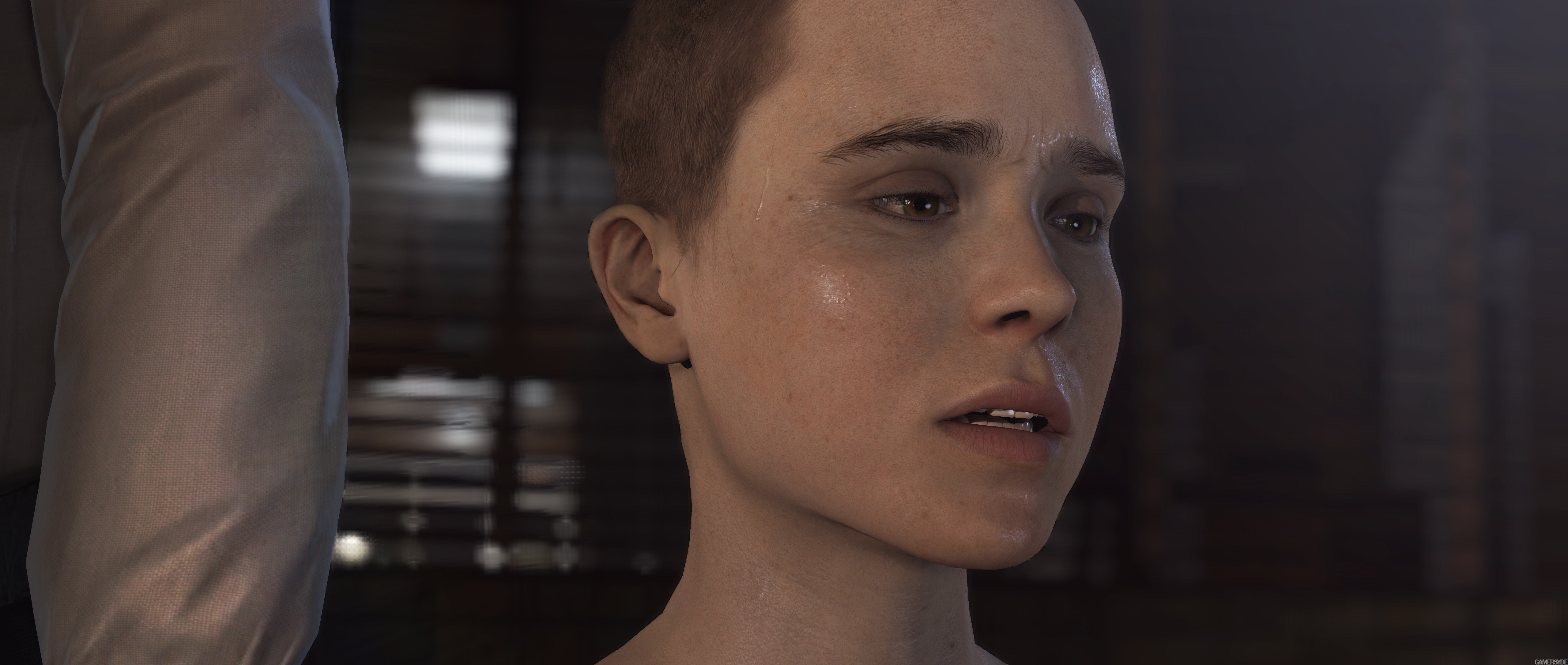I disagree with most of your conclusions 
FYI Uncharted does not use performance capture, the faces are completely hand animated.
Beyond actually does not match LA Noire's quality. You guys need to take a closer look at lip deformations and facial wrinkles and eyelids. Beyond's actual facial animation is quite simple, but it has very few flaws and the timing and precision are perfect - that's what sells it.
LA Noire's problem is that the facial textures are very low res and the shader is awfully simple - it seems to only use a color and a normal map and simple diffuse shading. Streaming bandwidth, disk space (on the 360) and RAM constraints are the reason.
The beard is totally simple, a photo-texture with a single polygon layer floating above the skin about 1-2 mm out. Eyebrows are only present in the texture. This is very simple tech, but it's used very well, the quality and resolution of the textures is what makes it stand out - particularly when compared to Heavy Rain or the Kara demo.
The eyes are very simple too, it's mostly a nice HDR or fake HDR reflection map with properly tuned values. There's no real depth to the iris, no internal reflections or refractions.
All in all this is another proof that high quality art is the most important aspect. Sure, there's probably a lot of fine tech too, but I think the closest parallel is GT5 on the PS3 - finding the right settings for light intensities, reflections, making sure you don't get caught cutting corners, and polishing your artwork to a flawless level.
So I also think that it is a great achievement, but mostly because the team knows the system and its limits very well and they have amazing artists.
FYI Uncharted does not use performance capture, the faces are completely hand animated.
Beyond actually does not match LA Noire's quality. You guys need to take a closer look at lip deformations and facial wrinkles and eyelids. Beyond's actual facial animation is quite simple, but it has very few flaws and the timing and precision are perfect - that's what sells it.
LA Noire's problem is that the facial textures are very low res and the shader is awfully simple - it seems to only use a color and a normal map and simple diffuse shading. Streaming bandwidth, disk space (on the 360) and RAM constraints are the reason.
The beard is totally simple, a photo-texture with a single polygon layer floating above the skin about 1-2 mm out. Eyebrows are only present in the texture. This is very simple tech, but it's used very well, the quality and resolution of the textures is what makes it stand out - particularly when compared to Heavy Rain or the Kara demo.
The eyes are very simple too, it's mostly a nice HDR or fake HDR reflection map with properly tuned values. There's no real depth to the iris, no internal reflections or refractions.
All in all this is another proof that high quality art is the most important aspect. Sure, there's probably a lot of fine tech too, but I think the closest parallel is GT5 on the PS3 - finding the right settings for light intensities, reflections, making sure you don't get caught cutting corners, and polishing your artwork to a flawless level.
So I also think that it is a great achievement, but mostly because the team knows the system and its limits very well and they have amazing artists.


